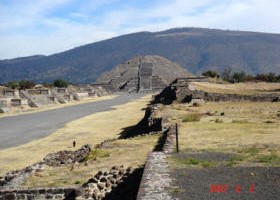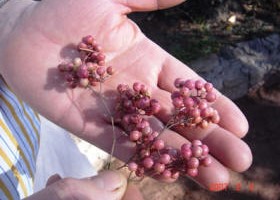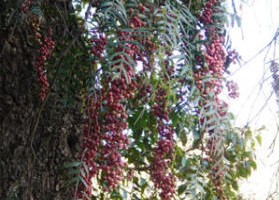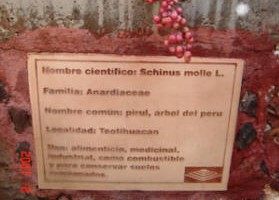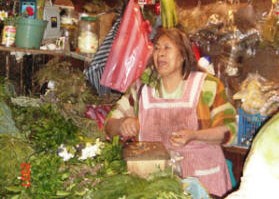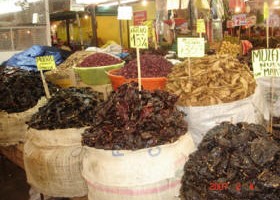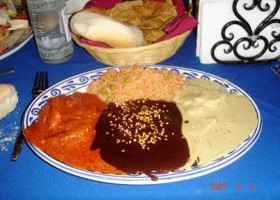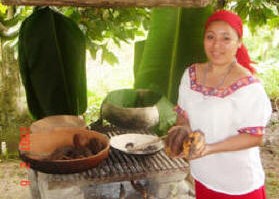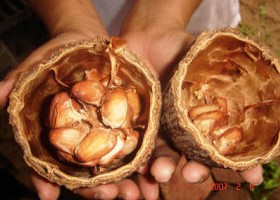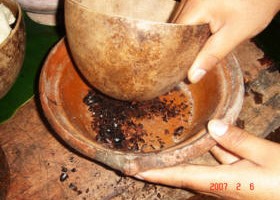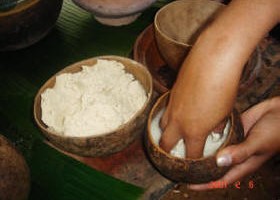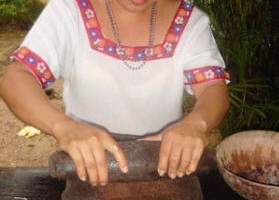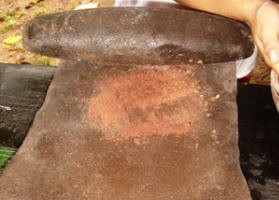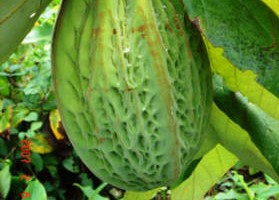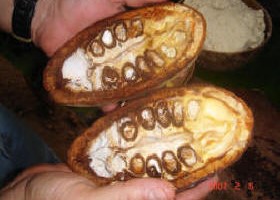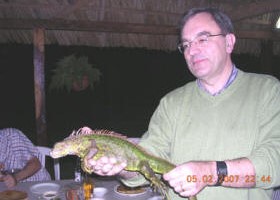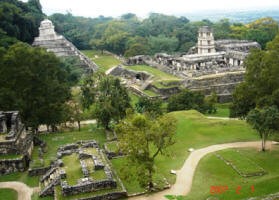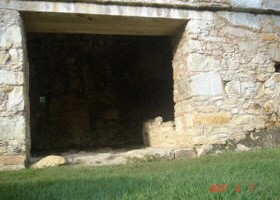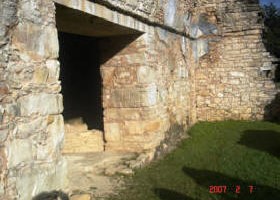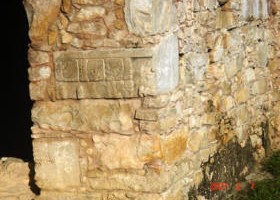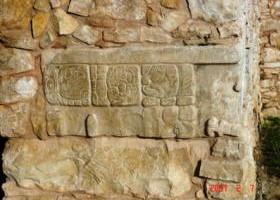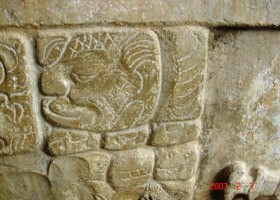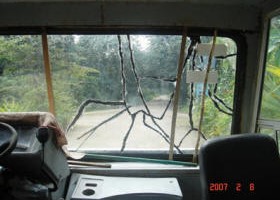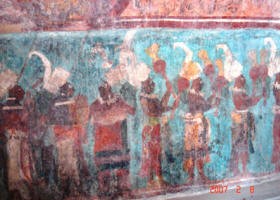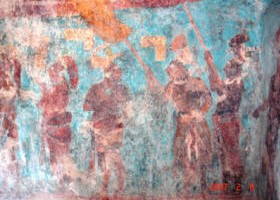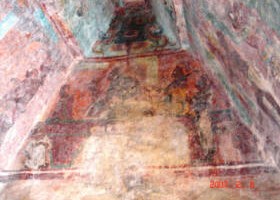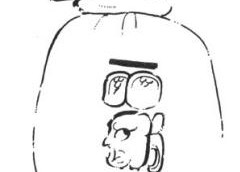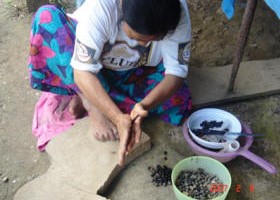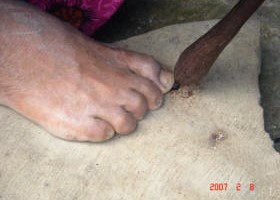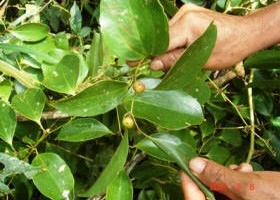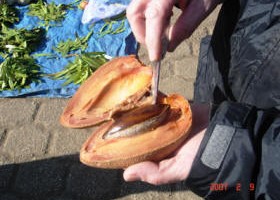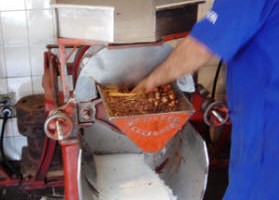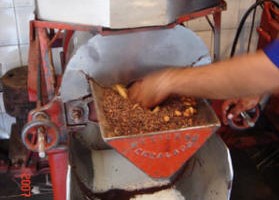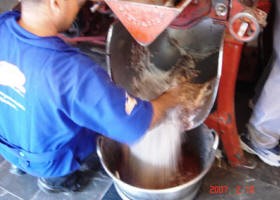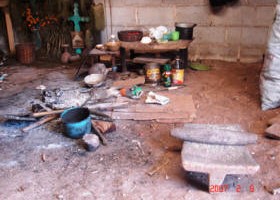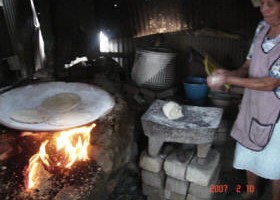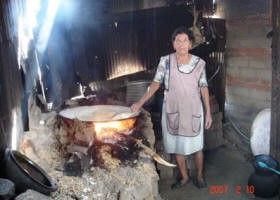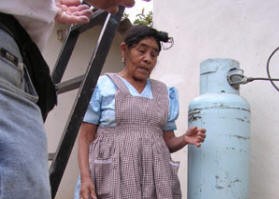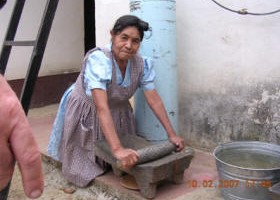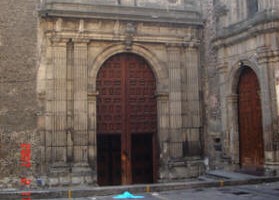Third trip to Tabasco
1. Puebla
In Puebla we were able to taste the "mole poblano" or mole from Puebla.
2. Tabasco recipes
During our stay in this Mexican state, we noted the following recipes.
Recipe with dried cocoa pods
Sometimes, the cocoa pods are left to dry above a fire in a kind of basket.
When they are dry, they are opened and the beans are toasted, and then crushed.
Polvillo
Toast the corn, then toast the cocoa.
Grind the two together, then dilute the mixture obtained in water.
Xubul
Cook the corn then pummel it in a "jicara" or calabash with openings dipped in water so that the peel remain in the "jicara"
Carefully toast the cocoa beans, remove the peel and grind them.
Pour the liquid corn into the drinking container and spray the cocoa by hand on the corn diluted in the water.
Pozol blanco
Cook the corn with a little lime.
See under FAQ, the explanation of this nixtimalisation.
Rinse, then grind the grains.
Dilute the mixture obtained in water.
Pozol negro
Boil the corn with a little lime. Rinse.
Toast the cocoa, remove the peel and grind with the maize.
This preparation is called "chelma" if the corn is boiled without nixtimalisation.
Sometime a white flower called "tonacaxtli", which is toasted first, is added.
Sometime people add a toasted "sapote" kernel, called "piste". They also add sometimes "pataste" beans.
"Chaucle" is also added to the pozol by grinding the flower and seed into the pozol mixture.
Cacahuada
This drink is made using the pulp of the cocoa pod.
Dulce de corazon de cacao
This is a kind of "confit" made using the heart of the cocoa pod, adding sugar and sometime cinnamon.
Concerns organically grown food
To keep insects away they prepare a mixture composed of:
- 1 portion of "nim"" a tree which keeps mosquitoes away
- 1 portion of garlic
- 1 portion of chili amashito
- 1 portion of red onions
the mixture is diluted in water.
Pataste
or Theobroma bicolor.
It grows on branches and not on the tree trunk.
The husk is very hard and similar to that of a coconut. The beans are flat and white inside.
Their peel is harder and thicker than that of a cocoa bean.
3. Palenque
The glyph of the cocoa carved in stone in the wall of a building in the northern part was an unexpected discovery.
Apparently there is also a tombstone, with cocoa flower and corn tree but we were unable to see it because we learnt too late that a special authorisation was needed.
4. Preparing drinks with the Lacandons (near Bonampak)
The lady we met told us about her way of making atole
- cook the corn
- rinse
- grind it adding the tip of the "sukir" or "moch" (two kinds of lianas).
For the Pozol:
- toast the corn
- toast the cocoa
- grind it adding the "sukir" or the "moch" (two kinds of lianas)
- beat with the molinillo
- remove the froth from time to time as necessary
- serve the drink and add a little froth
- sometimes people add "haaz" or "ahaaz" (i.e. the sapote kernel).
A stay at "Campamento Rio Lacanjá"is recommended for those who want total change of scenery and adventure.
Accommodation is in rustic cabins alongside the river any you can enjoy a descent in canoe or an inflatable raft or a walk in virgin forest.
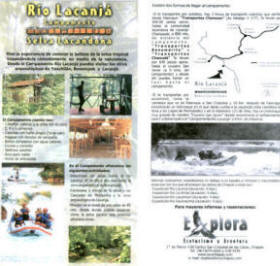
5. Oaxaca
The Oaxaca champurrada
The ladies we asked gave us the following information.
First of all they prepare the atole:
Boil the corn, rinse it and then boil it again
Then toast the cocoa, remove the peel and grind it together with the sugar and the atole.
The Oaxaca chocolate recipe.
A chocolate intended to be used to make a chocolate-based drink is produced in the machines shown in the photos below.
The recipe is 2 kilos of toasted, peeled cocoa, 3 kilos of sugar, 50 grams of cinnamon and 50 grams of almonds.
The sugar is put in the recipient underneath. The cocoa, cinnamon and the almonds are ground and the resultant paste runs over the sugar. The sugar and paste are mixed together using a spatula.
6. Mexico City
We were able to see Hernan Cortez's tomb.
It is in the church of Jesus de Nazareno but few people know that.
